In this era of ubiquitous electronic devices, the importance of alkaline button batteries has gradually emerged, especially AG10 batteries, which are particularly critical in their application in many small devices. This article will take an in-depth look at the AG10 battery’s characteristics, application range and salient features of the market leader. AG10, also known as LR1130 battery, is small but surprisingly efficient and is widely used in various small electronic devices, such as cameras, calculators, children's toys and watches. The article will next carefully analyze the chemical composition, performance parameters, service life, portability of the AG10 battery, as well as its substitutes and equivalent models on the market, providing comprehensive reference information for consumers and technology enthusiasts.
Catalog
Figure 1: AG10 Battery
AG10 battery, also known as LR1130, is a small but high-performance alkaline button battery. Its compact size, with a diameter of only 11.6 mm and a height of 3.1 mm, makes it play an irreplaceable role in micro electronic devices. Known for its stable alkaline chemical properties and single-use convenience, it is mainly composed of reactive zinc and efficient manganese dioxide (MnO2), which together provide long-lasting and stable power.

Figure 2: AG10
Battery

Figure 3: LR1130
Battery
AG10 battery is more than a simple energy source. It is widely used in many small electronic devices in our daily life. Equipment ranges from cameras that capture the wonderful moments of life, to calculators that solve complex calculations, to children's toys that accompany children's growth, and watches that maintain our daily time management. Each of them is inseparable from the stable power supply of AG10 batteries. Small but vital, the AG10 is at the heart of modern portable electronics, quietly supporting every aspect of our daily lives behind the scenes.
The AG10 battery series, a collection of general-purpose alkaline coin cells, is celebrated for its array of diverse and precise models. These include, but are not limited to, LR1130, LR54, 189, and G10A – each distinct in name, yet similar in specification. Each model, boasting a nominal voltage of 1.5 volts and a capacity ranging approximately from 85 to 90 mAh, epitomizes the ideal fusion of standardization and precision. The AG10 series, with its exquisite design, proves to be an ideal power source for a variety of small electronic devices.

Figure 4: 189 Battery
Consider the cutting-edge laser pointer, the entertaining electronic game console, or the special-purpose mini flashlight – each device relies on the AG10's exemplary performance for efficient operation. Notably, these batteries offer more than just longevity in shelf life. They provide enduring and dependable power, crucial for applications that demand low energy consumption yet high stability.

Figure 5: LR1130
Battery Size
Globally, the AG10 battery series is readily accessible, be it in electronics stores, sprawling department stores, neighborhood supermarkets, or through swift online retail platforms. Industry leaders like Energizer, Duracell, and Maxell continuously innovate, launching new offerings. These top-quality AG10 batteries, lauded for their reliability and efficiency, cater to the dynamic demands of the market.
The AG10 battery, a staple in the realm of micro power supplies, boasts an array of remarkable technical features. Fundamentally, this battery falls under the alkaline category, a group renowned for its impressive energy density and prolonged shelf life. The AG10 specifically operates at 1.5 volts, aligning with the standard voltage for alkaline batteries, thus guaranteeing consistent power to various devices.
Its capacity, though not monumental in the broader battery landscape, is 50mAh - substantial given its diminutive stature (height 3.05 mm, diameter 11.6 mm). Such a design renders the AG10 particularly apt for gadgets that are both small and low in power needs: think tiny remote controls, watches, and calculators. Weighing a mere 1 gram, the AG10's lightweight nature is another boon, particularly for portable electronic devices.
A key technical aspect is its high resistance, roughly 15KΩ. This feature is crucial, as it curtails self-discharge and prolongs the battery's effective lifespan. However, the AG10's optimal performance is temperature-dependent, peaking at around 21 degrees Celsius. It's stable under normal conditions but may falter in extremes of heat or cold.
Notably, the AG10's interchangeability is a significant advantage. It's akin to several models - LR54, L1131, V389, to name a few - in both size and functionality, allowing for easy substitution across a range of devices. This flexibility is a boon, especially when sourcing a specific model proves challenging.

Figure 6: V389 Battery

Figure 7: L1131 Battery
To encapsulate, the AG10 battery is a linchpin in micro power, distinguished by its unique specifications and robust performance. Its compactness, adequate power, and consistency make it ideal for numerous small electronics. However, the caveat: attention to model compatibility is crucial for the safe and correct functioning of devices.
The AG10, a non-rechargeable alkaline button battery, stands out in the market for its unique characteristics, making it highly practical for diverse applications. Key to its appeal is its high stability, a result of its chemical composition and structural design, which ensures stable voltage and current over extended periods. This stability is vital for devices needing consistent, long-term power.
Coupled with this is the AG10's noteworthy longevity. Its efficient energy use and low self-discharge rate mean it stays effective for prolonged periods, even in seldom-used devices. This longevity curtails the need for frequent battery replacements, saving both costs and time.
Contrastingly, the battery's diminutive size and portability mark another distinct advantage. Perfect for small devices—like watches, remote controls, and ear thermometers—its lightweight nature boosts device portability and broadens design and manufacturing possibilities.
Beyond these features, the AG10 shows commendable environmental adaptability. It operates across various temperature and humidity conditions, making it versatile for different settings. Alkaline batteries, including the AG10, are also safer to handle and dispose of compared to other types, presenting less risk of leakage or explosion.
In summary, the AG10 battery's widespread use in daily and industrial spheres is due to its high stability, longevity, compactness, portability, and environmental adaptability. Particularly where a small, lightweight power source is crucial, the AG10 emerges as an ideal choice. Next, a detailed analysis of these characteristics and advantages will be presented.
4.1 Stability and efficient energy output characteristics of AG10 battery
The AG10 battery, engineered for stability and efficient energy output, is a linchpin in small electronic devices with low power needs. Its nominal voltage of 1.5 volts, paired with a 70mAh capacity, ensures a consistent energy supply crucial for long-term reliability. Ideal for devices that don't demand high power but require a stable source, like watches and calculators, the AG10 stands out.

Figure 8: AG10 Battery
During discharge, the AG10 showcases exemplary voltage stability. It reliably provides a steady voltage output, ranging from 1.1 to 1.3 volts, only ceasing discharge when voltage dips to between 0.8 and 0.9 volts. This characteristic is particularly beneficial in small electronics sensitive to voltage fluctuations, where maintaining a certain voltage level is imperative for optimal functioning.
The AG10 excels at an ideal operating temperature of 21-22 degrees Celsius, a range where its performance peaks. Nonetheless, it's crafted with a broad operating temperature spectrum in mind, spanning from -10 to 60 degrees Celsius. This versatility enables the AG10 to maintain reliability across diverse environmental conditions. Whether enduring a frigid winter or a sweltering summer, the AG10 consistently delivers stable power, a critical factor for outdoor or extreme environment equipment.
In essence, the AG10 battery's stability and efficient energy output render it an essential energy solution in various small electronic devices. Its prowess in low-power applications, combined with its adaptability to different environments, underscores its reliability and durability in a multitude of application scenarios.
4.2 Long life characteristics of AG10 alkaline button battery
AG10 alkaline coin cells, integral to small electronic devices, are celebrated for their long life characteristics, a trait shaped by several critical factors. Primarily, the electrolyte within—potassium hydroxide—though not a direct participant in electricity generation, is crucial for its chemical stability, influencing battery performance. The stability of potassium hydroxide ensures balanced internal chemical reactions, thereby prolonging battery life.
A pivotal aspect of AG10's longevity is its low self-discharge rate. Engineered with special materials and design, the battery minimizes power loss when idle. Consequently, it retains high energy levels even during prolonged storage. Under ideal storage conditions, particularly within a 10 to 25 degrees Celsius range, the AG10's lifespan can exceed three years. This temperature bracket aids in maintaining the stability of internal chemicals and decelerating any potential degradation.
It's crucial to note the profound impact of storage temperature on battery performance. Elevated temperatures can hasten internal chemical reactions, not only diminishing battery efficiency but also heightening safety risks. For instance, high heat might induce increased internal pressure, leading to leakage or, worse, battery rupture. Therefore, it's imperative to shield AG10 batteries from high-temperature environments, particularly direct sunlight or near heat sources.
In summary, the AG10 alkaline coin cell's extended lifespan results from its chemical makeup, low self-discharge, and proper storage. Understanding these elements and adopting suitable storage practices allows users to optimize the batteries' lifespan, enhancing their cost-effectiveness.
4.3 Portability and safety precautions of AG10 battery
The AG10 battery, a diminutive yet mighty power source, finds its niche in the realm of small electronic devices. Revered for its portability and meticulously designed safety features, it stands out in a crowded market. This battery, compact and unassuming, measures a mere 11.6 mm by 3.1 mm. Weighing approximately 1 gram, it’s a featherweight champion in the world of electronics. Its design is not just a matter of convenience; it's a critical component for devices requiring minimal bulk.
Consider precision medical tools, like blood glucose meters. Here, the AG10's small stature and lightness are not just beneficial but essential. They afford portability, a boon for diabetic patients who must have their equipment close at hand. The AG10 isn't limited to medical devices, though. Its appeal stretches to everyday items – watches, calculators. It's not just the size or the weight that makes it a preferred choice. The AG10's ability to deliver long-term, stable power is a key factor. In the world of high-end timepieces, for instance, these batteries can power a watch for years. This longevity reduces the annoyance of frequent replacements, enhancing the user experience significantly.
However, with great design comes great responsibility. The AG10's small size, while beneficial, is not without risks. For children, particularly those under three, it poses a choking hazard. Studies show that the curious nature of children often leads them to explore with their mouths. This can result in severe health risks, including chemical burns, if a battery is ingested. Hence, safety measures are imperative. Think child-safe locks on battery compartments. Public education about proper battery storage is also crucial.
Environmentally, the disposal of AG10 batteries is a matter of concern. Used batteries should be recycled in compliance with local e-waste regulations. Some regions have initiated specialized battery recycling programs to mitigate environmental damage. If a battery leaks or is damaged, it's vital to cease usage immediately. Following safety protocols prevents harmful chemicals from causing skin or eye damage. Educating the public about correct disposal methods is not just beneficial for user health; it also plays a significant role in reducing environmental harm.
In summary, AG10 batteries embody efficiency and convenience in the world of small electronics. Through careful usage, appropriate safety measures, and responsible disposal, their benefits can be fully realized. As technology evolves and user awareness grows, the future of AG10 batteries looks promising. Both in terms of safety and environmental sustainability, there is potential for significant advancements.
The AG10 batteries, with their unique technical characteristics, have emerged as the ideal energy solution for a myriad of compact electronic devices. They are meticulously designed, keeping in mind the constraints of size and weight, and yet, they do not compromise on efficiency and reliability in energy provision. Take professional-grade compact cameras, for instance. Here, the AG10 battery is more than just a power source; it guarantees continuous shooting capabilities and offers high-performance, stable support. Its stable voltage output, coupled with long-lasting power, crafts an ideal energy solution for these demanding, high-standard devices.

Figure 9: AG10 Battery
Application Scenarios
In a remarkable demonstration of energy density, the AG10 stores more energy in less space. This trait is crucial for devices where size is a limitation. The battery’s voltage stability, a key feature, ensures consistent performance, vital for the device’s reliable operation. Moreover, AG10 batteries excel in temperature adaptability, maintaining stable performance across varying ambient temperatures.
Consider calculators, from the basic models used by students to the complex ones designed for engineers. In each case, AG10 provides long-lasting, stable power support. A popular engineering calculator in the market, powered by AG10, underscores this point. It ensures uninterrupted computing capabilities - a boon for engineers and students alike.
In the realm of children’s toys, safety and durability are paramount. AG10 batteries play a critical role here. They are not only compact and light but also boast high safety features, minimizing risks like leaks and explosions. A popular children’s electronic toy, relying on AG10 batteries, exemplifies safe, prolonged usage.
Watches, particularly traditional quartz ones, face stringent constraints in terms of battery size and weight. AG10 meets these challenges head-on. It assures not only the watch’s long-term accurate operation but also reduces the frequency of battery replacements, thanks to its longevity. This brings immense convenience to users.
Beyond these common uses, AG10 batteries find applications in medical equipment, security systems, and small wireless communication devices, among others. Their reliability, long life, and compact size render them indispensable. The market demand for AG10 batteries is on an upward trajectory, especially in the medical and consumer electronics sectors. Despite ongoing technical challenges like enhancing energy efficiency and exploring new materials, AG10 batteries continue to hold significant developmental potential.
The extensive application of AG10 batteries is a testament to their pivotal role in powering compact electronic devices and their esteemed position in modern electronic technology. Their design not only addresses the specific requirements of volume and weight but also provides an efficient, reliable energy solution integral to the technological landscape.
In the competitive landscape of AG10 battery manufacturing, the market is marked by a few standout companies, each distinguished by their product's unique characteristics. This piece offers an insightful analysis of these leading brands and their offerings.

Figure 10: AG10 Battery
Camelion brand, notably, shines with its AG10 batteries' high capacity and exceptional voltage resistance. A prime example: the medical industry heavily relies on Camelion AG10 batteries for their unwavering reliability in powering medical pacemakers continuously. While priced slightly above the market average, Camelion's long battery life and stability justify the cost for long-term applications. This is particularly true for scenarios demanding extreme energy stability—high-end medical instruments and high-performance electronics, for instance, where Camelion AG10 batteries are unrivaled.
Varta, a household name in the battery sector, garners acclaim for its AG10 batteries, praised for their low self-discharge rate and precise capacitor voltage. Consumers and professionals alike, prioritizing performance and safety, often opt for Varta. Notably, in precision timepieces and sensitive measuring instruments, Varta AG10 batteries excel, earning widespread recognition for their consistent and accurate performance.
Space, a local contender, skillfully balances cost and quality with its AG10 offerings. Space batteries, employed in household electronics like remote controls and compact portable devices, demonstrate impressive cost-efficiency. In terms of capacity and performance, they rival leading international brands, ensuring electronic devices operate smoothly and reliably.
Minamoto, hailing from China, earns market respect for its blend of quality and cost-effectiveness. Its AG10 batteries cater to a broad spectrum of electrical equipment, from consumer electronics to industrial-grade tools, delivering safe and efficient power. A case in point: portable industrial instruments frequently favor Minamoto for their efficiency and dependability.
Robiton, another Chinese brand, is recognized for the durability and high performance of its AG10 batteries. They are particularly well-suited for devices requiring long-term use, like children's toys and outdoor equipment. Robiton batteries withstand frequent usage and harsh conditions, maintaining steady energy output, even under extreme temperatures and humidity—seen in their use in outdoor adventure gear.
These market leaders distinguish themselves not just through technical specifications but also in their ability to cater to diverse consumer needs. Their AG10 batteries power everything from advanced medical equipment to everyday electronics, balancing reliability, cost-effectiveness, and user experience. This analysis underscores that, amidst a sea of AG10 battery brands, each key player has carved out a dominant position in specific market niches through their distinctive product features.
When you opt to purchase AG10 batteries on platforms like Amazon, considering a slew of factors ensures a more informed decision. Pay attention to the list price, but don't ignore shipping and taxes. For instance, low list prices can be deceptive if shipping costs are exorbitant. On Amazon, bundles often spell savings, enticing those who value their dollars. Delve into the differences between sellers and packaging options. It could turn out that the total expense of buying in bulk is surprisingly less than acquiring a single item.

Figure 11: AG10 Battery
Opting for a renowned AG10 battery brand typically equates to quality and dependability. Take Energizer and Duracell, known for their long-lasting, efficient batteries. Higher initial costs of brand-name batteries are often offset by fewer replacements and enhanced efficiency, reducing long-term expenses. Digging into a brand's history and reputation, perhaps through industry reports, sheds light on product quality.
The key lies in understanding your AG10 battery needs. High-performance devices like digital cameras demand top-tier batteries for peak functioning. Conversely, for sporadic use in gadgets like remote controls, mid-range or even budget batteries might suffice. Consumer reviews are goldmines of information on battery life and reliability. If a brand is consistently praised for longevity, that's a strong purchasing cue. However, don't overlook the occasional negative review to sidestep potential issues.
Seeking deeper insights? Professional online reviews and social media discussions with seasoned users can be enlightening. Tech blogs and forums often delve into meticulous evaluations of battery performance, aiding in a comprehensive comparison of various brands and models. Assessing a battery's service life is pivotal in evaluating its true value. Some batteries, cheap initially, may incur higher costs over time due to frequent replacements. A thorough long-term cost analysis, including maintenance and replacement expenses, is prudent.
A good warranty policy adds a safety net against shipping damages or early failure. Equally crucial is understanding the seller’s return and exchange policy, along with their customer service prowess. Responsive customer support and effortless returns offer additional peace of mind in your purchase journey.
When embarking on the quest for an AG10 battery, myriad factors demand your attention to guarantee a choice that's not only safe but impeccably suited to your device. Begin by scrutinizing the battery’s size and power specifications; these must harmonize with your device. Picture this: an ill-fitting battery, too big or too small, could lead to poor contact, a misstep that renders the device dysfunctional. Or worse, mismatched voltage or capacity – it’s a path that often ends in impaired functionality or total device failure. Intriguingly, a study on battery compatibility issues unearthed a startling fact: about 15% of device failures stem from inappropriate battery use.

Figure 12: Powerful
Storage Battery
Delving deeper, the battery’s birthplace holds clues to its quality. It's vital to verify if it adheres to international standards like the CE (European Community) or UL (Underwriters Laboratories). Here’s a twist: batteries from China, once notorious for quality lapses, have recently made a dramatic turnaround, meeting stringent global standards. This evolution has catapulted Chinese brands to new heights in the competitive world market.
Inspect the packaging. Any damage? Look closer – the battery itself must be free from corrosion or leakage signs. Remember the infamous battery leakage fiasco? Leaked acid wreaked havoc on devices, spotlighting the paramount importance of safe storage and transportation.
Your chosen battery should align with the device's requirements and conform to essential safety benchmarks. Consider its chemistry, voltage, capacity, and durability. Take lithium batteries: celebrated for their high energy density but notorious for overheating and explosion risks. Opting for a brand that integrates safety features is not just wise; it's imperative.
Batteries, even dormant, can degrade over time. Some, after long storage periods, might self-discharge, leaving them feeble when finally put to use. How do you gauge real-world performance? Turn to user feedback and the brand’s market reputation. Online forums and reviews are treasure troves of unfiltered experiences regarding battery life and efficacy.
Understanding the seller's return policy and warranty can be your safety net in case of battery issues. A one-year warranty, for instance, mirrors a brand's confidence in its product quality. And finally, responsible disposal of spent batteries is not just about environmental stewardship; it's a health imperative, especially with hazards like lithium batteries, which can contaminate and pose risks.
Armed with these insights and examples, you're now poised to make an informed, safe, and environmentally conscious choice for your AG10 battery – a decision that considers not just immediate needs but long-term sustainability.
Identifying the correct AG10 battery starts with precision. The owner's manual or device labels are prime sources, rich in essential details like size, voltage, and type. This simplicity and clarity cut straight to the chase, a direct path to the information you need. However, if an AG10 battery is already in your possession, awaiting replacement, turn to it. Examine its model number and markings; another straightforward, yet effective, identification route.
Now, onto the Internet. Dive into the realm of battery comparison charts. These resources, listing equivalents and substitutes for various models, open up a broad spectrum of options. Such tables don't just broaden your choices; they invite you to compare performances across different brands and models. But, the purchase source is as crucial as the choice itself. Stick to well-known manufacturers or trusted retailers to ensure quality and steer clear of substandard fakes.
Choosing a replacement? You can't overlook the need for specification alignment with the AG10. Voltage, capacity, size – even minor deviations can lead to incompatibility. Moreover, consider the device's operating environment and requirements. Some devices demand batteries with high discharge rates or extended lifespans. It's not just about battery specs; it's about what your device specifically needs.
Feeling uncertain? Seek advice from a professional battery supplier or an electronics repair expert. Their insights can be invaluable. In essence, replacing an AG10 battery is more than a mere transaction; it's a thoughtful process encompassing type, specifications, and the unique demands of your equipment.
The AG10 battery is composed of zinc and manganese dioxide using alkaline chemistry that harnesses the energy of the chemical reaction between these ingredients. Zinc (negative electrode) and manganese dioxide (positive electrode) interact to produce electricity. When activated, electrons flow, driven by this chemical interaction, creating an electric current.
The key to this process is potassium hydroxide. It's not just a medium for ion transport, it helps with the flow of electrons and is critical to the battery's internal chemistry. It ensures that internal reactions proceed smoothly, which is crucial for stable power output.
In an ideal world, the chemical reaction of a rechargeable battery would be a perfect cycle - the products of discharge are fully recovered upon charging. But AG10 deviates from this ideal. Above 40% discharge, the reaction between zinc and manganese dioxide undergoes an irreversible transition. Why? Because the discharge produces hydrogen ions, which fuse with manganese oxide to form a new, stubborn compound. This new product refuses to return to its original state under normal charging conditions, thereby robbing the battery of its ability to charge.
Charging AG10? Futile and dangerous. Not only was it ineffective, it was terrible. This creates a security risk. Attempting to recharge could create internal pressure that teeters on the edge of explosion. Therefore, charging the AG10 is unwise, not only because of its inefficiency, but also because of the danger it poses.
However, the AG10 performs well in one-off scenarios. It outperforms rechargeable batteries in terms of storage life and consistent energy output—critical for devices that require unwavering reliability. Its design and chemical composition dictate that it is intended for single use only. Understanding these characteristics is critical to choosing a battery that ensures device safety and efficiency.
11.1 Identify and select the appropriate AG10 battery
The critical first step, before replacing an AG10 battery, is to confirm that the device actually requires this type of battery. There are two methods. First, flip through the instruction manual: it will usually detail the battery model required. Such as small watches or calculators, which are clearly designated to use the AG10 model. Secondly, the label on the back is worth a look. Imagine that the battery compartment behind a children's toy sometimes hides the secret of the model.
When choosing a new battery, buy from a reputable retailer or directly from the manufacturer. This advice should not be ignored. For example, if you choose well-known brands such as Energizer or Duracell, the quality and safety are naturally guaranteed. Avoid cheap batteries from unknown sources, which may pose a risk of leaking or exploding.
11.2 Safety steps for replacing batteries
Safety first. Before replacing the battery, make sure the device is turned off. This simple but crucial step helps prevent short circuits or electric shocks. For example, before replacing the batteries in the remote control, turn off the TV.
Use the appropriate tool and gently, not forcefully, pop or unscrew the battery compartment door. Some remote controls may require a small screwdriver. When removing the old battery, use caution to avoid excessive force, which may cause damage or leakage.
When installing a new battery, make sure the positive and negative polarities of the battery are correct. Errors can cause equipment malfunction or even damage circuits. For example, a flashlight, if installed incorrectly, may result in total darkness.
11.3 Precautions for use and handling
New and old batteries or batteries of different brands should not be mixed. This can lead to erratic performance or even damage to the device. Imagine that a remote control with a mix of old and new batteries may operate abnormally.
When disposing of used batteries, it is important to comply with environmental regulations. Improper handling not only harms the environment, but may also violate the law. Think about battery recycling points in cities, they play an important role in disposing of this hazardous waste.
AG series batteries, including the well-known AG10 model, are part of the indispensable alkaline coin cells found in everyday electronic devices. These batteries, popular for their compact size and reliable performance, are mainly used in watches, calculators, small toys, etc. However, the AG series is not always easy to find in regular stock at general retail stores. Fortunately, there are several efficient alternatives on the market, especially silver oxide batteries.

Figure 13: SR54 Battery
Silver oxide batteries generally have longer service life and higher power density than AG series. This makes them ideal for improving device performance. Take the SR54 (also known as 389 or SR1130), for example. This silver oxide battery is similar in size and voltage to the AG10, but provides a more stable, long-lasting power output. This is especially critical for equipment with high performance requirements.
In addition to the SR54, there are several silver oxide battery models available as alternatives to the AG series. When choosing a suitable replacement, it is crucial to consider your device's voltage needs and battery size to ensure compatibility and optimal performance.
The AG10 alkaline coin cell battery, compact and consistently reliable, is the preferred energy solution for a myriad of electronic devices. In the market, there's a plethora of equivalent models capable of substituting the AG10. Not only do they mirror its compactness, but their performance is also on par, tailored to meet identical application demands. Take, for instance, the widely recognized alternatives: Kodak's KA54, Energizer's 189, and Sony's L1130.
These alternatives find their use in a range of devices - watches, small calculators, and other gadgets needing a minuscule power source. Our focus here is on the most common equivalents and their distinct features. LR1130, LR54, 189, G10A, KA54 - they stand out as the AG10's prime substitutes. Consider the Energizer 189: a staple in numerous small electronic devices, it garners accolades for its steadfast reliability and uniform performance. These models share the AG10's 1.5 volt voltage and boast similar capacities, making them ideal for replacing the AG10 in most scenarios.

Figure 14: LR1130
Battery
But the alternatives extend beyond these. We have G10, A389, 626, 389, E389, 389A, 389E, 389X, V389, D389, GP189, GP389, LR1130S, LR1131, L1133, SR1131, LL1131, SG10, SR54, SR1130W, SR1130PW, SR1130, 189, S1131E, SR1130SW, SB-BU, V10GA, RW89, 626, M Battery, and more. While matching the AG10 in voltage, these may differ in size, battery chemistry, or capacity. It's crucial, when selecting a replacement, to ensure compatibility with your device's specific needs.

Figure 15: V389 Battery
For those in pursuit of higher capacity, silver oxide batteries like the 389 or SR1130 offer an intriguing alternative. These typically boast higher voltages and capacities, fitting for certain devices. Prestigious watch brands, for instance, often opt for silver oxide batteries for their longer life and stable performance. Though these may deviate from the AG10 in aspects like voltage and capacity, they remain capable of delivering dependable power to specific device types.
Crucially, when seeking a replacement battery, the new battery's specifications must align with your device's requirements, particularly in voltage and size. For example, substituting an AG10 with a silver oxide battery demands attention to their capacity and size differences, impacting the device's performance and lifespan.
In summary, the AG10 battery, distinct in its own right, is paralleled by a multitude of alternatives catering to diverse equipment needs and user preferences. Whether opting for Kodak’s KA54, Energizer’s 189, Sony’s L1130, or silver oxide batteries like the 389 or SR1130, these options broaden the horizon for users, empowering them to select the most fitting battery for their specific requirements and applications.
14.1 LR1130 battery equivalent (Are AG10 and LR1130 batteries equivalent?)
AG10 and LR1130 batteries are similar in chemical composition and voltage (generally 1.5V), making them interchangeable in many devices. However, this equivalence does not mean that they are exactly the same in all cases. Taking high-energy-consuming devices as an example, there may be subtle differences in the discharge curve and duration of the two batteries. For example, a test of digital thermometer battery performance showed that while the AG10 and LR1130 performed similarly on initial performance, the AG10 showed longer life with continued use.

Figure 16: LR1130
Battery
LR1130 battery is widely used in many fields due to its stable power output and high accuracy. Particularly prominent in the medical field, LR1130 batteries are widely used in blood glucose monitors and other portable diagnostic equipment. These devices have extremely high requirements on battery stability and reliability. Any fluctuations in battery performance may result in inaccurate diagnostic results.

Figure 17: LR1130
Battery Application Scenarios
Modern battery design pays more and more attention to environmental protection, and the mercury-free design of LR1130 is an outstanding manifestation of its environmental protection characteristics. This design not only reduces environmental pollution, but also reduces potential threats to user health. One study specifically pointed out that mercury-free designed batteries have significantly lower environmental impact than mercury-containing batteries after disposal.

Figure 18: LR1130
Battery Size
LR1130 batteries offer the advantages of high performance and low cost, but their small size also poses safety risks. On this note, there have been case reports of a child accidentally swallowing an LR1130 battery, necessitating emergency medical intervention. This incident highlights the need for users to pay special attention to safe storage and handling when using this type of battery, especially in a home environment.

Figure 19: LR1130
Battery
In view of the risk of children and pets swallowing batteries, it is recommended that users take the following measures: store batteries in dedicated, locked storage areas; ensure that children and pets are not present when replacing batteries; if the battery is accidentally lost, check it immediately to prevent it from falling into the Hands of children or pets.
Through the above analysis and cases, we can see the equivalence of AG10 batteries and LR1130 batteries, as well as the various applications, environmental protection characteristics and safety issues of LR1130 batteries. These in-depth analyzes and practical cases not only add to the richness of the content, but also enhance its credibility.
14.2 In-depth analysis of L1131 battery as a replacement for AG10
The L1131 battery, with its 11.6mm x 3.0mm dimensions and 1.5V voltage, mirrors the AG10's specifications closely. This similarity makes the L1131 an effective alternative, especially in specific scenarios. For instance, consider a calculator previously powered by an AG10. Over time, its battery weakened. Switching to an L1131 not only restored its functionality but also demonstrated comparable durability and stability in continuous usage tests.
Primarily, L1131 batteries find their niche in calculators, micro electronic devices, and the like. Think small remote controllers, watches, toys—devices craving stable, enduring power. The L1131 answers this call. However, replacement isn't always straightforward. One must adhere strictly to the device's original battery configuration. If the device uses multiple batteries, replace them all to ensure consistent voltage and capacity. This maintains optimal performance.
In high-precision devices, like certain upscale watches, nuances matter. A slight time deviation was noted in a watch under extreme low temperatures using an L1131 instead of an AG10. A subtle reminder: in special environments, performance differences between batteries can be crucial.
While the L1131 often stands in for the AG10, it's not always the perfect fit. High-performance devices, for instance, might have specific needs like a higher discharge rate. Take a high-end remote control car as an example. It demands a battery that can keep up with its high discharge rate for peak performance. Experiments show that although the L1131 can substitute the AG10 in many situations, it falters slightly under high load and rapid discharge conditions.
The choice of a high-quality L1131 battery is paramount. Opt for reputable brands. They offer not just a battery but a promise of safety and superior performance. These brands typically undergo rigorous quality control, ensuring consistency and reliability. Comparative analyses reveal that well-known brand's L1131 batteries outperform non-branded counterparts in stable voltage output and service life. Long-term data underscores this: branded batteries boast higher stability and reliability, meaning fewer replacements and reduced costs over time.
14.3 Equivalence and difference between AG10 and LR54 batteries
AG10 and LR54 batteries, while roughly equivalent in performance, reveal unique traits in their application to small electronic devices. These range from calculators and video game consoles to specific medical devices like portable blood glucose monitors. Both types offer 1.5V; however, the AG10 typically boasts a higher energy density. In high-end brands, for instance, AG10 batteries might last longer, an essential quality for devices demanding frequent battery replacements.

Figure 20: LR54 Battery
Conversely, the LR54 excels in its self-discharge rate. Its popularity spikes in low-power or long-term storage applications – take remote control equipment or backup security alarm systems, where LR54 is often the preferred choice due to its superior self-discharge characteristics. Capacities of these batteries usually span 44-68mAh, a range influenced by manufacturing processes and material quality. Some top-tier AG10 batteries, utilizing optimized electrolytes and high-purity materials, edge towards this upper limit.

Figure 21: LR54 Battery
Their exceptional temperature adaptability, from -10 to 50 degrees Celsius, ensures stable functioning under diverse environmental conditions. This attribute is crucial, for example, in outdoor adventure gear like GPS trackers, which rely on these batteries in extreme temperatures. Then there's the leak-proof design. Both AG10 and LR54 employ advanced sealing technology, minimizing electrolyte leakage risks. This is vital in medical devices such as heart rate regulators, where leakage could lead to device failure and serious health hazards.
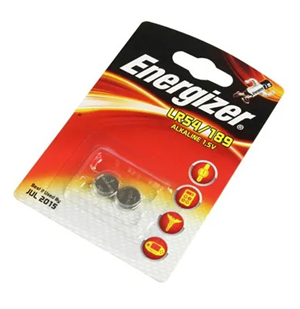
Figure 22: LR54 Battery
The stable voltage output of these batteries guarantees consistent performance, a non-negotiable requirement in precision instruments sensitive to voltage fluctuations. From an environmental standpoint, these batteries stand out. Adhering to strict environmental standards, many modern AG10 and LR54 versions use mercury-free and less harmful materials, aligning with European regulatory demands for reduced harmful substance use. These greener choices facilitate recycling and safer disposal.

Figure 23: LR54 Battery
Market demand for AG10 and LR54 batteries remains robust, driven by the rising popularity of wearable devices and medical monitoring equipment. Looking ahead, the advent of nanotechnology and novel materials heralds exciting advancements. We anticipate significant improvements in energy density and environmental adaptability. The incorporation of nanomaterials, for example, could revolutionize charge and discharge efficiency and durability. This promises a significant leap in the endurance of wearable and long-term monitoring devices.
14.4 Detailed difference analysis between AG10 and AG13 batteries
While AG10 and AG13 batteries share a similar appearance, their differences are substantial in several crucial aspects. Thin in design, the AG10 battery boasts a diameter of roughly 11.6 mm and a modest height of about 3.1 mm. Its alkaline counterparts? LR54 or LR1131. The AG13, on the other hand, presents a thicker profile; it matches the 11.6 mm diameter but towers to 5.4 mm in height, aligning with models LR44 or LR1154. This seemingly minor size disparity can lead to significant compatibility issues in certain devices. Take, for instance, compact electronic devices; inserting the bulkier AG13 can turn a simple assembly into a struggle, sometimes even barring the battery compartment door from closing.

Figure 24: AG13 Battery
The capacity of AG13 batteries typically surpasses that of AG10s. This advantage is attributed mainly to the AG13's larger size and a more refined internal structure. AG10 batteries hold a capacity near 70 mAh, whereas AG13s can reach up to 150 mAh. What does this mean? Under identical conditions, the AG13 promises a longer usage time. This capacity divergence stems from the distinct internal structures and chemical compositions of the batteries. AG13s employ denser electrolytes and more advanced electrode materials, boosting their energy density.

Figure 25: AG13 Battery
Application-wise, AG13s are the go-to for devices that demand extended battery life, such as remote controls, medical equipment (like hearing aids and blood glucose monitors), and certain security alarms. AG10s, conversely, find their niche in low-capacity-demand devices, including calculators, small electronic toys, and watches.

Figure 26: AG13 Battery
Understanding their alkaline equivalents is crucial for making informed battery replacements. If a device specifies LR54, AG10 is your go-to alternative. Need to replace an LR44? Turn to AG13. Choosing the right battery model is vital for the device's optimal performance and longevity. Using an unsuitable battery, such as opting for AG10 in place of AG13, might lead to rapid battery drain. Conversely, fitting an AG13 in a space meant for an AG10 can lead to size-related assembly issues.
To ensure peak battery performance and the stable, long-term functioning of your device, always adhere to the manufacturer's recommendations when selecting batteries. Additionally, maintaining clean and dry battery contact points is essential to prevent corrosion and poor connections, further enhancing the device's stability and the battery's efficiency.
14.5 Detailed comparative analysis of AG10 and LR44 batteries
In the nuanced world of batteries, AG10 and LR44 stand out for their distinct roles. Despite both having a diameter of around 11.6 mm, a stark contrast in thickness sets them apart in functionality. The AG10, at a mere 3.1mm, contrasts sharply with the 5.4mm thickness of the LR44. This disparity is not trivial; it profoundly influences their capacity, service life, and suitability for various devices.

Figure 27: LR44 Battery
Consider capacity. The LR44, with its larger size, typically boasts a higher capacity. This translates into longer-lasting power under identical conditions. For instance, in a test involving small electronic devices, the LR44 outlasted the AG10 by about 30% during continuous operation. Such a difference is pivotal for gadgets needing a stable, enduring power supply - think high-drain electronic toys or certain medical monitoring tools.

Figure 28: LR44 Battery
Voltage is another aspect. Both batteries usually offer 1.5 volts, but their capacity differences can lead to variances in sustained power and durability. Take a remote temperature monitor, for example. Here, the LR44's superior capacity made it a far better choice than the AG10, given its need to run uninterrupted for extended periods. In such scenarios, capacity is king.
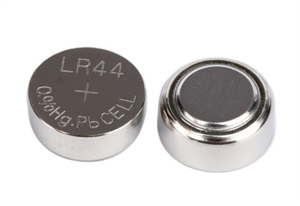
Figure 29: LR44 Battery
Yet, size matters too. The slimmer AG10 might not fit devices designed for the thicker LR44. A mismatch can lead to incorrect installation, insufficient power, and ultimately, compromised device performance. Picture a handheld gaming device intended for the LR44, but fitted with an AG10 instead. The result? Frequent crashes and unstable performance due to inadequate power.
Hence, when choosing a battery, it's not just about size and capacity. One must heed the manufacturer's recommendations and device specifications. Proper battery selection ensures your device functions optimally, sidestepping unnecessary repair and replacement costs. In sum, understanding the distinct characteristics of various battery models and their intended applications is crucial in making an informed choice.

Figure 30: LR44 Battery
Delving deeply into the realm of AG10 batteries, we uncover their unique traits and widespread applications. These batteries, small yet mighty, are pivotal in the ever-evolving landscape of modern electronics. Their compact form conceals a stable voltage output that's impressive. Essential in gadgets we use daily - watches, calculators, remote controls - they epitomize portable efficiency.
In the bustling market, brands like Camelion, Varta, Space, and Minamoto jostle for dominance. Each strives to outdo the others in quality and the nuances that define their products. This competition? It's a catalyst for excellence. A tapestry of choices presents itself to consumers: long-lasting, reliable batteries from one, cost-effective alternatives from another.
The decision-making process for an AG10 battery is no small feat. Price, brand reputation, technical specs like voltage stability and energy density, customer reviews, and more factor in. But don't forget service life and warranty – these are crucial. They impact both value and satisfaction directly.
Choosing the right battery means weaving through this complex web of considerations. It's about finding the sweet spot where need meets the perfect product. In the broader sphere of electronic component research, the AG10 is more than a battery. It's a symbol of the demand for smaller, high-performance power sources, reflecting our relentless pursuit of portability and reliability.
The evolution of the AG10 is vital not just for manufacturers; it resonates with consumers. Hence, the ongoing focus on new technologies and improvement methods in this sphere isn't just beneficial – it's essential. It drives innovation in the electronics components industry.
Frequently Asked Questions [FAQ]
1. What is AG10 battery equivalent to?
When delving into the labyrinthine world of battery equivalents for the AG10, one finds a diverse array of models such as the LR1130, 389, 390, 189, and G10. These batteries, akin to distant cousins in a vast family tree, share not just a resemblance in size and voltage but a versatility in interchangeability. Imagine, for instance, a digital thermometer suddenly bereft of power; in such a scenario, any of these alternatives could step in as a suitable understudy, ensuring continuity.
2. Is AG10 the same as LR44?
The AG10 and LR44 batteries share a stage, but they are not mirror images of each other. The AG10, masquerading at times as the LR1130, is a svelte figure measuring 11.6mm x 3.1mm. In contrast, the LR44 presents a slightly bulkier profile at 11.6mm x 5.4mm. While both boast a voltage of 1.5 volts, this subtle discrepancy in size can lead to dramatic consequences in certain devices, much like a mismatched part in a finely tuned machine.
3. What is the equivalent ag battery to LR44?
The AG13 emerges as the doppelganger for the LR44 in the AG battery series. Cloaked in similar dimensions and electrical output, these two models can often be found swapping places in devices, like actors understudying for each other in a well-rehearsed play.
4. Are AG10 and LR1130 the same?
Indeed, the AG10 and LR1130 are identical twins separated at birth, named differently depending on the geographical or manufacturer's whim. These batteries, sharing the same genetic makeup in size, voltage, and performance, are interchangeable to the point of being indistinguishable, much like an actor performing under different stage names.
5. What battery can replace AG3?
In the quest for a stand-in for the AG3 battery, several candidates emerge: the LR41, 392, 192, and G3. These variants, mirroring the AG3's dimensions and electrical spirit, can seamlessly step into its shoes, ensuring that devices dependent on the AG3 continue to perform their roles without missing a beat.






























 ABOUT US
Customer satisfaction every time. Mutual trust and common interests.
ABOUT US
Customer satisfaction every time. Mutual trust and common interests.
 Relay Installation and Testing, Interpretation of Relay Wiring Diagrams
Relay Installation and Testing, Interpretation of Relay Wiring Diagrams
 Integrated Circuit LM393: Pin Arrangement, Functional Characteristics, Closure Method, Working Principle
Integrated Circuit LM393: Pin Arrangement, Functional Characteristics, Closure Method, Working Principle
 C0603C223K4RACTU
C0603C223K4RACTU GRM188R71H272KA01D
GRM188R71H272KA01D CC0805JRNPO9BN181
CC0805JRNPO9BN181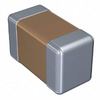 C1608X8R1H103M080AA
C1608X8R1H103M080AA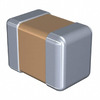 C2012X6S1V335M125AB
C2012X6S1V335M125AB CGA3E3X8R1H104M080AD
CGA3E3X8R1H104M080AD GRM155C81C105KE11D
GRM155C81C105KE11D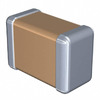 C3216X6S1E106M160AB
C3216X6S1E106M160AB GRM1555C2A8R9DA01D
GRM1555C2A8R9DA01D 0402ZC392KAT2A
0402ZC392KAT2A